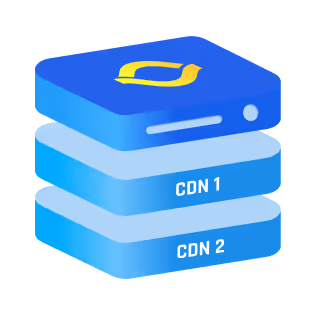These days, everything seems to be “smart.” Phones. Cameras. Even refrigerators. But what actually makes these devices smart?
A big part of the answer is artificial intelligence, not ChatGPT, or Gemini, but more specifically, Edge AI.
What Is Edge AI?
Edge AI simply means running artificial intelligence (AI) directly on a device; right where the data is being created. So instead of sending everything to a cloud server somewhere far away, your AI model is working right on the device itself. This device is what we call the edge, and the AI running there is “AI on edge.”
Think of it like this: your phone’s voice assistant responding instantly without needing internet? That’s Edge AI. A camera detecting motion and deciding whether to alert you? That’s Edge AI too.
{{cool-component}}
Why Do We Need Edge AI?
Why not just let the cloud handle everything? It’s a fair question. But there are a few important reasons why we bring the intelligence to the edge:
- Speed (Low Latency): Edge AI responds instantly. There’s no waiting for data to travel to the cloud and back.
- Privacy: Since data doesn’t always leave the device, there’s less risk of it getting exposed or stolen.
- Less Internet Dependency: You don’t need a constant connection to get results.
- Cost Savings: Less data sent means fewer cloud charges and less power used.
- Reliability: Even if your internet drops, your device still works.
How Does Edge AI Work?
Here’s the general idea. You start with an AI model; a brain trained to recognize faces, detect objects, or predict patterns. Normally, this would sit on a big server.
But in Edge AI, that model is compressed and optimized to run on smaller, local devices. That includes:
- Smartphones
- Smart cameras
- Industrial sensors
- Drones
- Robots
- Wearables
These edge devices are equipped with either a tiny edge AI computer like a Raspberry Pi or NVIDIA Jetson, or a special AI chip built into the hardware.
Once the model is loaded, it can analyze incoming data (like images, sounds, or sensor input) and take action; right there on the spot.
Examples of Edge AI in Real Life
Let’s talk about where you might run into edge artificial intelligence in everyday life:
- Home Security Cameras: They recognize humans vs. pets and decide when to send alerts; without uploading every second of footage to the cloud.
- Smartphones: Face unlock and photo enhancement features rely on edge ai software running locally.
- Smart Cars: Vehicles use AI on edge to detect lanes, obstacles, and pedestrians in real-time; critical for safety.
- Retail Stores: Edge AI cameras help track inventory, foot traffic, and shoplifting attempts.
- Healthcare Devices: Wearables can detect irregular heartbeats and notify you instantly; no need to send data out first.
What Is an Edge AI Computer?
An edge AI computer is a compact computing device built to handle AI tasks on the edge. It usually includes a CPU, GPU (or dedicated AI chip), memory, and sometimes a neural processing unit (NPU). These machines are designed to work in real-world environments; outside data centers.
Some popular edge AI computers include:
- NVIDIA Jetson Nano / Xavier: Often used in robots, drones, and cameras.
- Google Coral Dev Board: Has a built-in AI accelerator for fast image and voice processing.
- Raspberry Pi with AI accelerators: Used in DIY or low-power projects.
These machines are powerful enough to handle AI models but small and efficient enough to be placed almost anywhere.
{{cool-component}}
What Is Edge AI Software?
Now that you’ve got the hardware, let’s talk software.
Edge AI software includes the tools and frameworks that let you build, train, and deploy AI models to edge devices. A few big players in this space are:
- TensorFlow Lite: A lighter version of Google’s AI platform, designed for mobile and embedded devices.
- OpenVINO: Intel’s toolkit for running AI on its hardware.
- NVIDIA DeepStream: Great for video analytics at the edge.
- ONNX Runtime: Helps AI models run across different devices and platforms.
These tools help shrink your AI models so they can run smoothly on the edge without losing too much accuracy.
Edge AI vs Cloud AI
Let’s break down the main differences:
But it’s not always either-or. Many systems today use a mix of both.
For example, a smart speaker may use edge AI to process wake words like “Hey Google,” but then rely on cloud AI to handle your actual questions.
Edge AI Versus Distributed AI
So,you have a team of cooks making dinner.
- Edge AI is like giving each cook their own tiny kitchen station: they slice, dice, and cook right where the food shows up.
- Distributed AI is more like having one big kitchen spread across several rooms; every cook handles a small part of the recipe, then the dishes get assembled at the end.
Here’s how they differ and where you’d use each:
Edge AI Accelerator (NPU / TPU / DSP)
Think of an Edge AI accelerator as a tiny turbo-charger inside your device. Your regular CPU can run AI, but it eats battery and stalls on big math.
An accelerator; often called an NPU (Neural Processing Unit), TPU (Tensor Processing Unit), or DSP (Digital Signal Processor), is a special chip block built only for the heavy lifting behind edge artificial intelligence.
Common accelerators include:
How to Calculate Your Edge AI Power Budget
You’re putting a smart camera on a street pole. It has to run all week on a modest battery; no wall plug, no solar panel. Before you buy hardware, you need to know how much juice your edge AI model will drink.
1. Figure Out the Workload (TOPS)
First, add up how many tera‑operations per second your model needs in production:
TOPS_required = (frames per second) × (model_ops per frame) / 10^12
Example: 30 FPS video × 5 × 10¹¹ ops per frame ≈ 15 TOPS.
2. Check the Chip’s Efficiency (TOPS/W)
Every accelerator sheet lists efficiency. A Jetson Orin Nano advertises ~40 TOPS at 15 W → ≈2.7 TOPS/W.
An NPU inside a modern phone SoC might hit 10 TOPS at 1 W → 10 TOPS/W.
3. Solve for Watts
Watts_needed = TOPS_required ÷ (TOPS/W of chip)
Our camera: 15 TOPS ÷ 10 TOPS/W = 1.5 W just for inference.
Add 1 W for sensors + 0.5 W for radios, and the board drinks ≈3 W total.
4. Convert to Battery Life
Battery_hours = (battery_mAh × battery_volts) ÷ (Watts_needed × 1000)
A 12 Wh (≈3,000 mAh @ 4 V) pack runs:
12 Wh ÷ 3 W ≈ 4 hours of continuous inference.
Too short? You can:
- Lower FPS or run the model on motion events only
- Quantize the model (cuts TOPS_required)
- Pick a chip with better TOPS/W
- Duty‑cycle the radio to batch uploads
{{cool-component}}
Conclusion
Edge AI moves machine learning away from distant data centers and places it directly on local devices. That short distance is what makes all the difference. With a compact model, a small edge AI computer, and an on-chip accelerator, everyday objects act on data the moment it appears.



.png)
.png)
.png)






